Plastic extrusion is a cornerstone of modern manufacturing, producing everything from pipes and profiles to packaging and automotive parts. However, defects in this process can lead to product failures, increased costs, and safety hazards.
The most common defects in plastic extrusions—melt fracture1, shark skin2, die swell, warpage, fish eyes, surging, and voids/air traps—can be identified through visual inspection, dimensional checks, and quality testing, ensuring high-quality outputs.
Understanding these defects, their causes, and detection methods is vital for manufacturers to maintain quality and efficiency. Read on to explore how to spot these issues, their industry-specific impacts, and strategies to prevent them.
Defects in plastic extrusions always result in unusable products.False
Some defects, like minor surface irregularities, may only affect aesthetics, while others, like voids, can compromise functionality, depending on the application.
Plastic extrusion defects are unique to this process.False
Similar defects can occur in other plastic processing methods, such as injection molding, though their causes and manifestations may differ.
- 1. What Are the Most Common Defects in Plastic Extrusions?
- 2. How Can You Spot These Defects?
- 3. What Are the Industry-Specific Implications of These Defects?
- 4. What Are the Key Steps in the Extrusion Process Where Defects Occur?
- 5. How Do Materials Influence Defect Likelihood?
- 6. What Practical Tools Can Help Identify and Prevent Defects?
- 7. How Do Related Technologies Mitigate Defects?
- 8. Conclusion
What Are the Most Common Defects in Plastic Extrusions?
Defects in plastic extrusion3s can disrupt production and degrade product quality, making early identification essential.

The most frequent defects include melt fracture, shark skin, die swell, warpage, fish eyes, surging, and voids/air traps, each with distinct characteristics and causes.
| Defect | Description | Common Causes |
|---|---|---|
| Melt Fracture | Wavy or irregular surface appearance | High shear rates, improper die design |
| Shark Skin | Rough, textured surface resembling shark skin | High melt pressure, inadequate cooling |
| Die Swell | Increase in product diameter beyond die opening | Polymer chain relaxation |
| Warpage | Distortion or bending of the product | Uneven cooling, residual stresses |
| Fish Eyes | Small, circular surface defects | Contamination, moisture in material |
| Surging | Inconsistent flow or thickness | Process fluctuations |
| Voids/Air Traps | Pockets of air or gas trapped within the product | Trapped air, gas from decomposition |
Melt Fracture
Melt fracture appears as a wavy or streaky surface, often due to excessive shear rates in the die. It’s common in high-viscosity polymers like HDPE4 and is visible as irregular patterns.
Shark Skin
Shark skin manifests as a rough, ridged texture, typically from high melt pressure or poor cooling. It resembles a pebbled finish and can be spotted visually.
Die Swell
Die swell occurs when the extruded product expands beyond the die dimensions, often by 10-50%, due to polymer relaxation. Measure the product to detect this issue.
Warpage
Warpage causes bending or twisting, resulting from uneven cooling or stresses. Check for shape irregularities using straight edges or gauges.
Fish Eyes
Fish eyes are tiny, round surface defects caused by contamination or moisture. They may require magnification to spot.
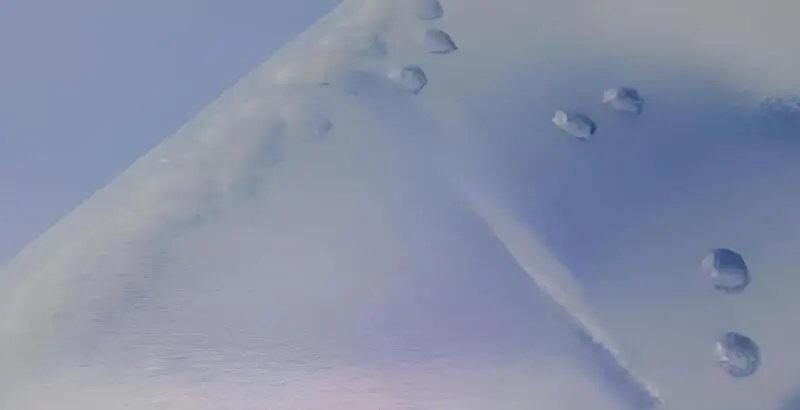
Surging
Surging leads to uneven thickness or flow, linked to inconsistent processing conditions. Monitor thickness with calipers or automated systems.
Voids/Air Traps
Voids are internal bubbles or pockets from trapped air or gas. They’re detectable visually on transparent parts or via ultrasonic testing.
Melt fracture only occurs with improper die design.False
While die design is a factor, high shear rates and material properties also contribute to melt fracture.
Fish eyes are always visible to the naked eye.False
Small fish eyes often require magnification, especially in opaque materials.
How Can You Spot These Defects?
Early detection of defects ensures quality control and minimizes waste in plastic extrusion.

Use visual inspection for surface defects, dimensional checks for shape and size issues, and quality testing for internal flaws to spot extrusion defects effectively.
Visual Inspection
Examine the surface for waviness (melt fracture), ridges (shark skin5), or bubbles (voids). Adequate lighting enhances visibility.
Dimensional Checks
Measure the product with calipers or straight edges to identify die swell6 or warpage, ensuring it meets specifications.
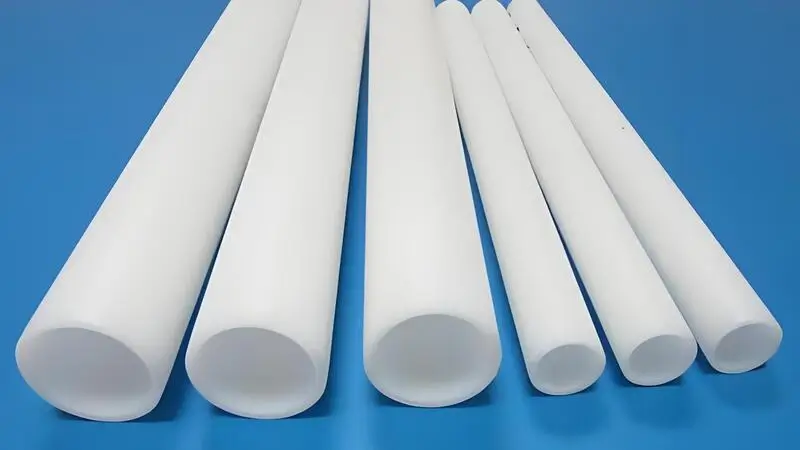
Quality Testing
For internal defects like voids, employ ultrasonic testing or cut samples to inspect the interior.
Visual inspection alone can detect all extrusion defects.False
Surface defects are visible, but internal issues like voids require advanced testing methods.
Dimensional checks are essential for spotting die swell.True
Die swell alters the product’s size, making measurements a key detection tool.
What Are the Industry-Specific Implications of These Defects?
The impact of extrusion defects varies by industry, affecting functionality, safety, and aesthetics.
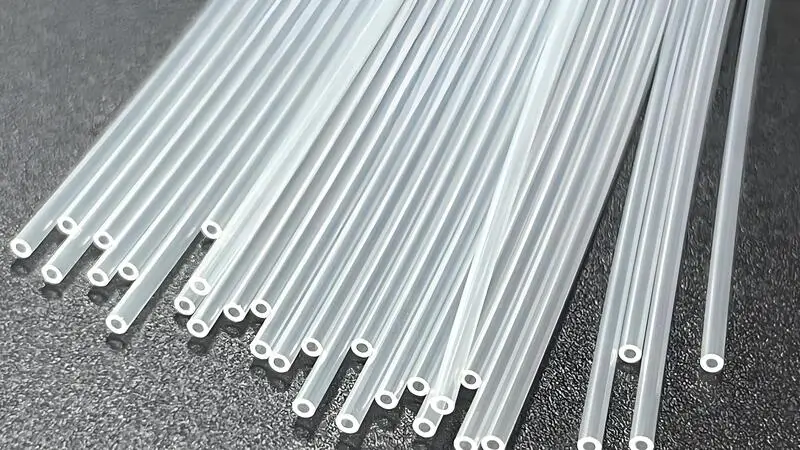
Defects like voids compromise medical devices, warpage affects construction components, and surface issues impact packaging and automotive applications differently.
| Industry | Critical Defects | Potential Consequences |
|---|---|---|
| Medical | Voids, fish eyes | Sterility loss, device failure |
| Construction | Warpage, die swell | Structural integrity issues |
| Packaging | Melt fracture, shark skin | Reduced appeal, functionality |
| Automotive | Surging, voids | Leaks, component failure |
Medical Industry
Voids or fish eyes can breach sterility or functionality in devices like tubing, posing health risks.
Construction Industry
Warpage or die swell in profiles can weaken structures or misalign components, requiring precise control.

Packaging Industry
Surface defects like melt fracture reduce visual appeal and printability, affecting brand perception.
Automotive Industry
Surging or voids7 in seals can cause leaks or failures, impacting vehicle reliability.
Defects have uniform consequences across all industries.False
Aesthetic defects may be tolerable in construction but critical in medical applications.
What Are the Key Steps in the Extrusion Process Where Defects Occur?
The extrusion process involves multiple stages, each with potential defect risks.
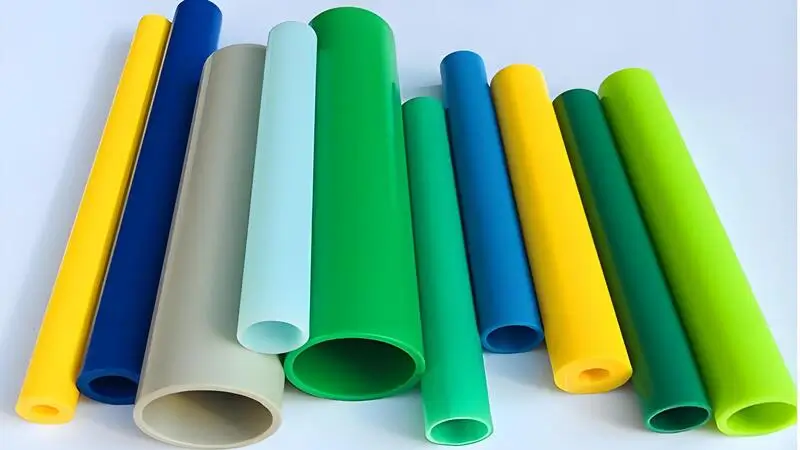
Defects arise during material preparation, melting, die extrusion, and cooling, influenced by process conditions and material properties.
Material Preparation
Contaminated or moist resin can cause fish eyes8 or voids. Ensure material purity and dryness.
Melting and Mixing
Poor mixing or temperature control leads to surging or voids. Optimize screw speed and heat settings.
Extrusion Through the Die
High shear or poor die design triggers melt fracture9 or shark skin. Adjust die geometry and pressure.
Cooling and Solidification
Uneven cooling causes warpage. Use uniform cooling systems like water baths.
Most defects originate during die extrusion.True
High shear and pressure at this stage commonly cause melt fracture and die swell.
Cooling does not affect defect formation.False
Improper cooling can lead to warpage or residual stresses.
How Do Materials Influence Defect Likelihood?
Material choice significantly affects defect occurrence in plastic extrusions.
Extrusion Through the Die
High shear or poor die design triggers melt fracture9 or shark skin. Adjust die geometry and pressure.

Polymers like polyethylene are prone to die swell, while PVC risks fish eyes from overheating, requiring tailored processing.
Polyethylene (PE)
PE, especially HDPE10, often exhibits die swell due to its molecular structure. Adjust die design to compensate.
Polypropylene (PP)
PP can warp if cooling is uneven. Ensure consistent cooling protocols.
Polyvinyl Chloride (PVC)
PVC’s sensitivity to heat can cause degradation and fish eyes. Control temperatures precisely.
All polymers are equally prone to extrusion defects.False
Polymer properties, like viscosity and thermal stability, dictate defect susceptibility.
What Practical Tools Can Help Identify and Prevent Defects?
Effective tools enable manufacturers to detect and mitigate defects efficiently.
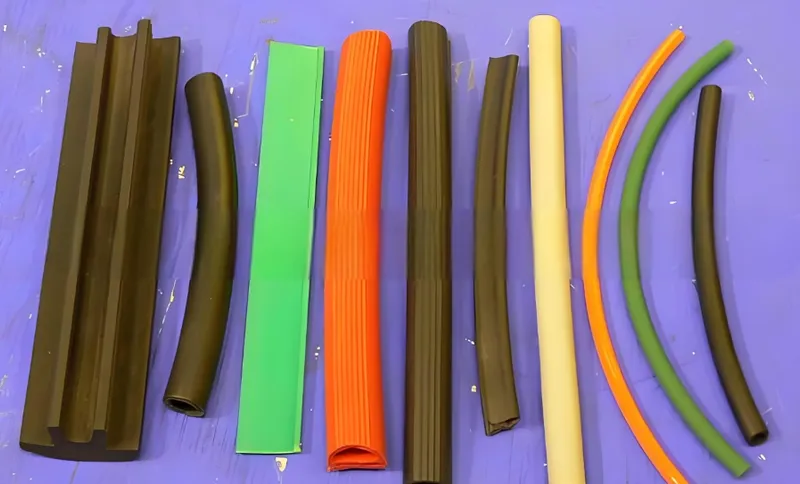
Use an inspection checklist and process optimization guidelines to spot defects and enhance extrusion quality.
Inspection Checklist
-
Visual Inspection: Look for melt fracture, shark skin, or fish eyes.
-
Dimensional Checks: Measure for die swell or warpage.
-
Internal Testing: Use ultrasonics for voids.
Process Optimization Guidelines
-
Select materials with suitable melt flow rates.
-
Optimize die design to reduce shear.
-
Implement consistent cooling systems.
Visual inspection is sufficient for all defect types.False
Internal defects require testing beyond visual checks.
How Do Related Technologies Mitigate Defects?
Innovations in extrusion technology offer solutions to reduce defect rates.

Advanced dies, new materials, and automated inspection systems help minimize defects and improve extrusion outcomes.
Advanced Die Designs
Modern dies lower shear rates, reducing melt fracture and shark skin.
Material Science
New polymers with enhanced properties decrease defect susceptibility.
Inspection Technologies
Machine vision and AI detect defects in real time, enhancing quality control.
Technology can eliminate all extrusion defects.False
While technology reduces defects, material and process variables can still cause issues.
Conclusion
Identifying and addressing defects like melt fracture, shark skin, die swell11, warpage, fish eyes, surging, and voids/air traps is critical for high-quality plastic extrusions. Visual inspections, dimensional checks, and quality tests enable early detection, while process optimization and emerging technologies offer prevention strategies. Understanding these defects ensures manufacturers can deliver reliable, cost-effective products across industries.
-
Understanding the causes and prevention methods for melt fracture is crucial for maintaining product quality and reducing waste. ↩
-
Learning about strategies to minimize shark skin defects can significantly improve the surface quality of extruded products. ↩
-
Exploring best practices in plastic extrusion can help manufacturers enhance quality and reduce defects, ensuring efficient production. ↩
-
Understanding shark skin can help you identify and mitigate surface defects in plastic extrusion, ensuring better product quality. ↩
-
Learning about die swell is crucial for maintaining product dimensions and quality in extrusion processes, preventing costly defects. ↩
-
Exploring the causes and effects of voids can enhance your understanding of internal defects, leading to improved quality control in manufacturing. ↩
-
Preventing fish eyes is essential for maintaining the integrity of PVC products. This resource provides valuable prevention strategies. ↩
-
Minimizing melt fracture is key to achieving high-quality extrusions. Discover effective techniques to address this issue in the linked resource. ↩ ↩
-
Understanding die swell is crucial for optimizing extrusion processes and improving product quality. Explore this link for in-depth insights. ↩









